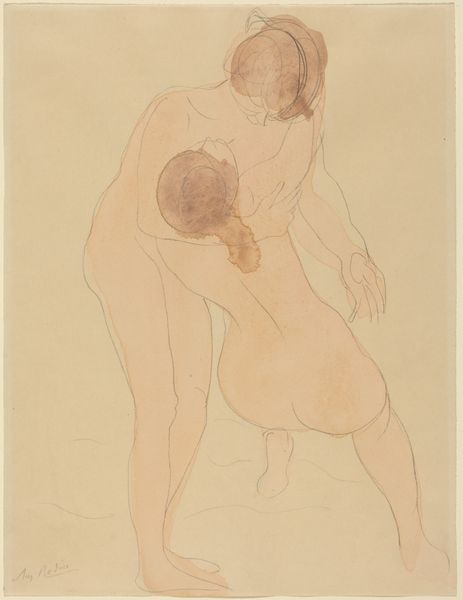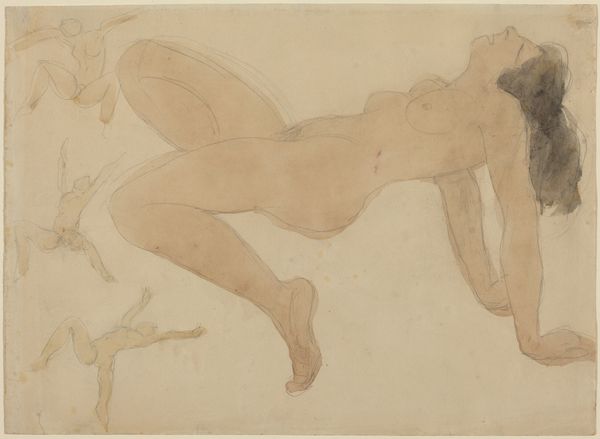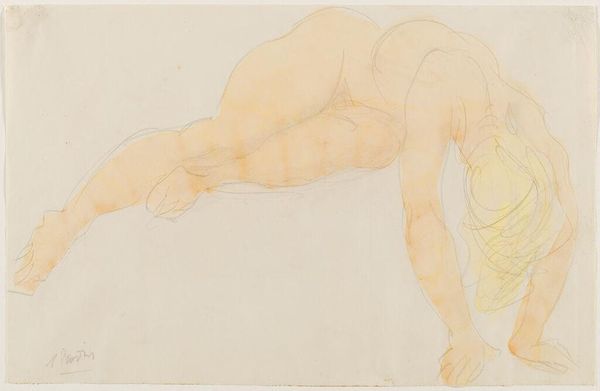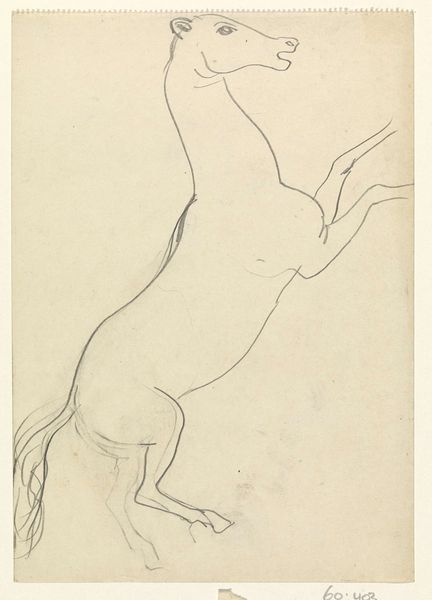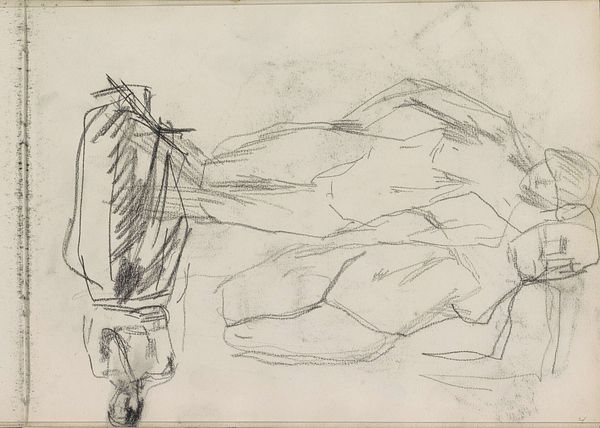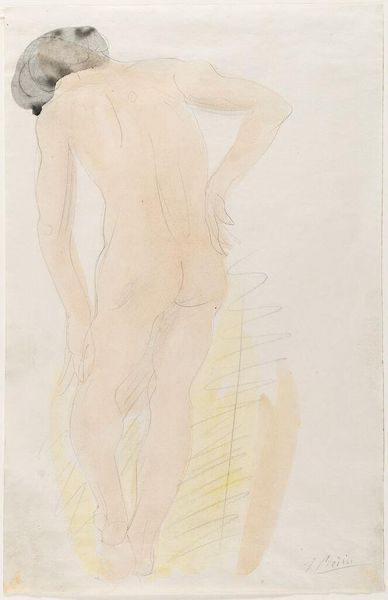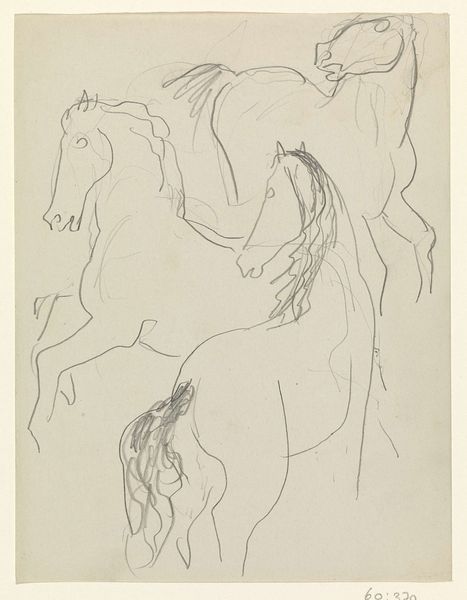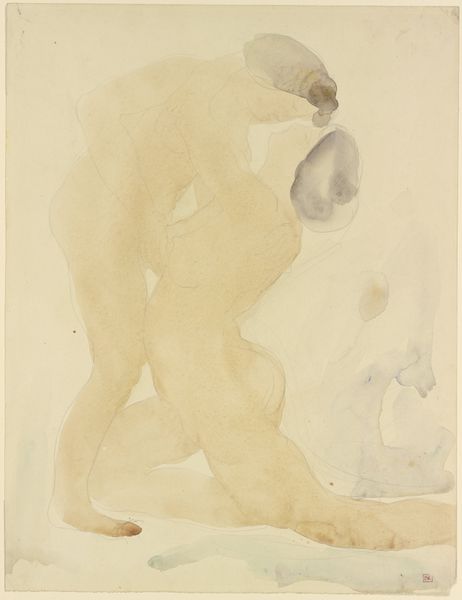
Dimensions: height 280 mm, width 230 mm
Copyright: Rijks Museum: Open Domain
Curator: Looking at this pencil and watercolor drawing, executed some time between 1850 and 1917, by Auguste Rodin, I’m immediately struck by the delicate atmosphere, almost dreamlike in its rendering of two female nudes. What is your impression? Editor: Fleeting, somehow both erotic and impersonal. The rapid strokes and blurring seem almost industrial, less concerned with idealized form than with capturing raw movement, maybe even objectifying female labor and form, not in a sympathetic way. Curator: I find the theme of shared female intimacy much more compelling here. Nudity in art has always been deeply symbolic. What symbols do you see emerge from its historical and cultural context here? Editor: To me, the medium tells us more than the theme. Rodin wasn’t interested in timeless ideals here; this feels like a quick study for sculpture. What does it tell us about the studio? Models certainly would not have had easy lives. Curator: Your interpretation highlights the difficult circumstances for many women in the art world, but it risks ignoring symbolic traditions and continuity. Nudity can symbolize vulnerability, but it can also point to freedom and unashamed embodiment of life. Rodin here seems focused on movement and form itself, freed from external constraints. Editor: But even "freedom" requires someone to frame it. Whose gaze is shaping their posture, their very existence within the frame? It is telling that Rodin chose paper and pencil. Not the traditional mediums of the Renaissance and its canons of feminine beauty. And certainly not sculpture. Curator: I'm reminded, however, how often Rodin challenges idealized forms and invites raw, real humanity to find expression in form. Editor: All the same, the ephemeral quality here also captures the nature of the materials at work. Pencil and paper decompose, they stain and fade. It shows an artist engaged with the materiality and social character of their materials in their art and production. Curator: Yes, but perhaps there’s value to reading it through different historical lenses too: how the feminine, idealized and embodied, retains its cultural, psychological, and yes, artistic power in visual culture, Editor: A fascinating interpretation. Though I find myself coming back to what we often forget – the working conditions in art making.
Comments
No comments
Be the first to comment and join the conversation on the ultimate creative platform.
